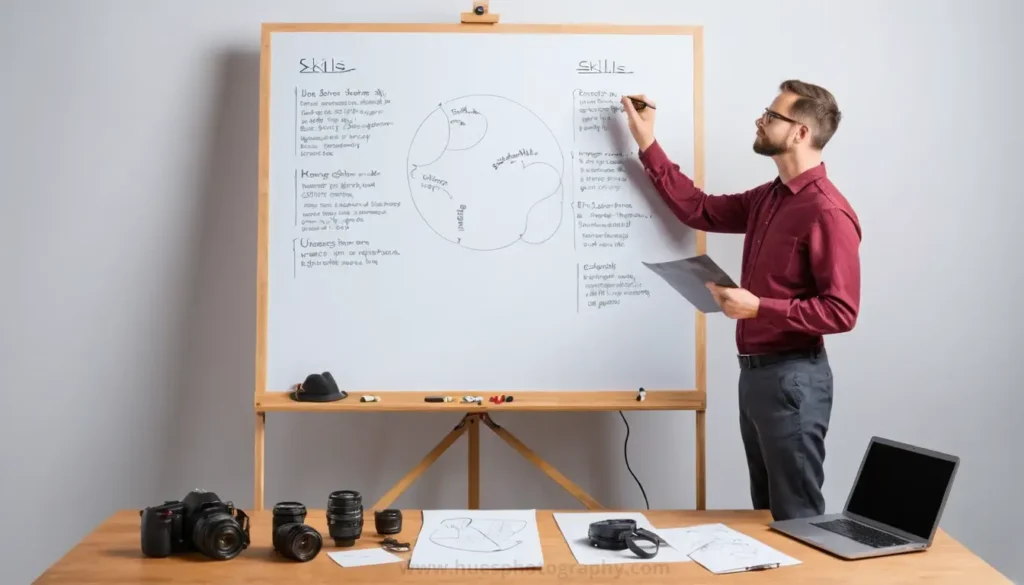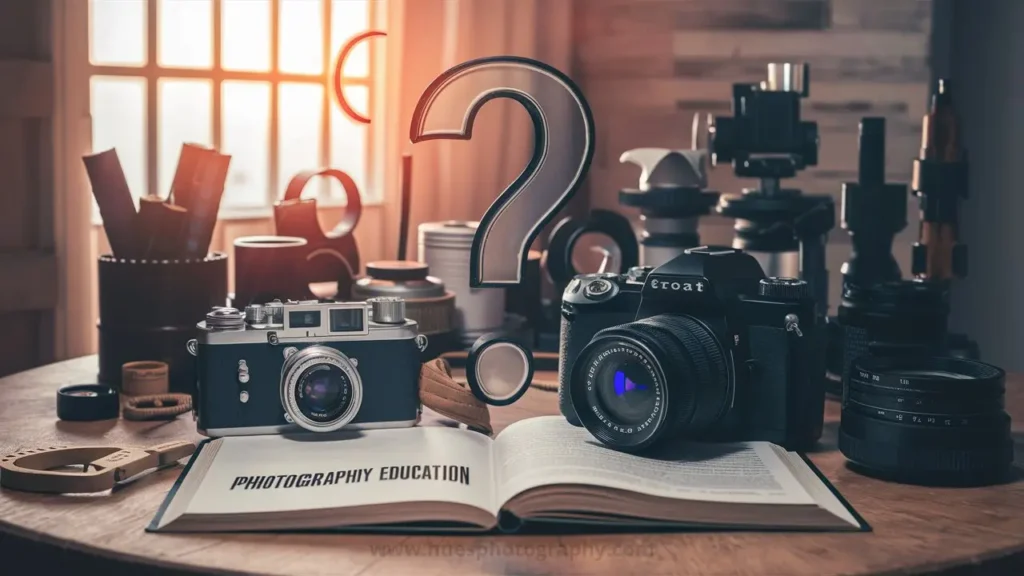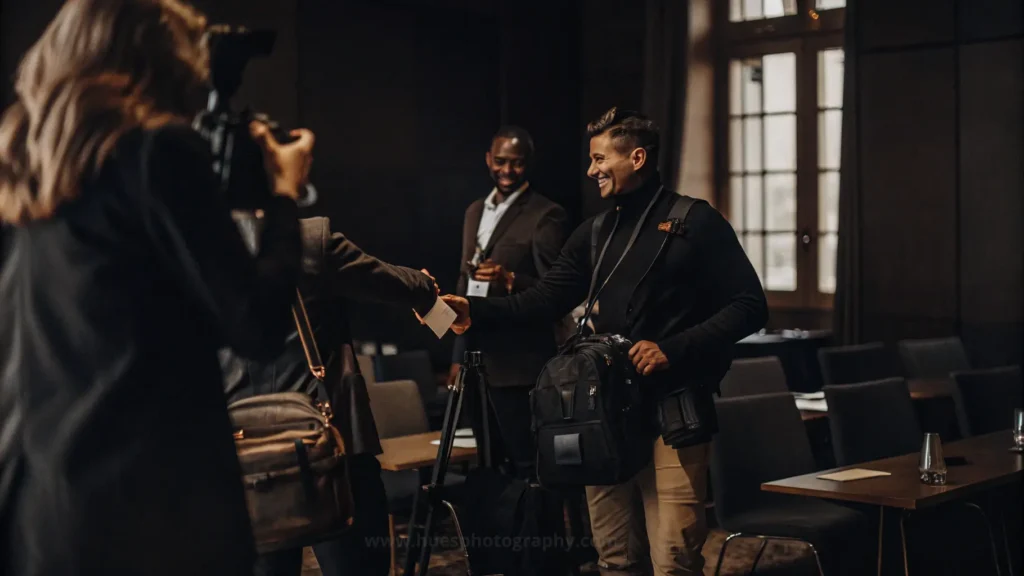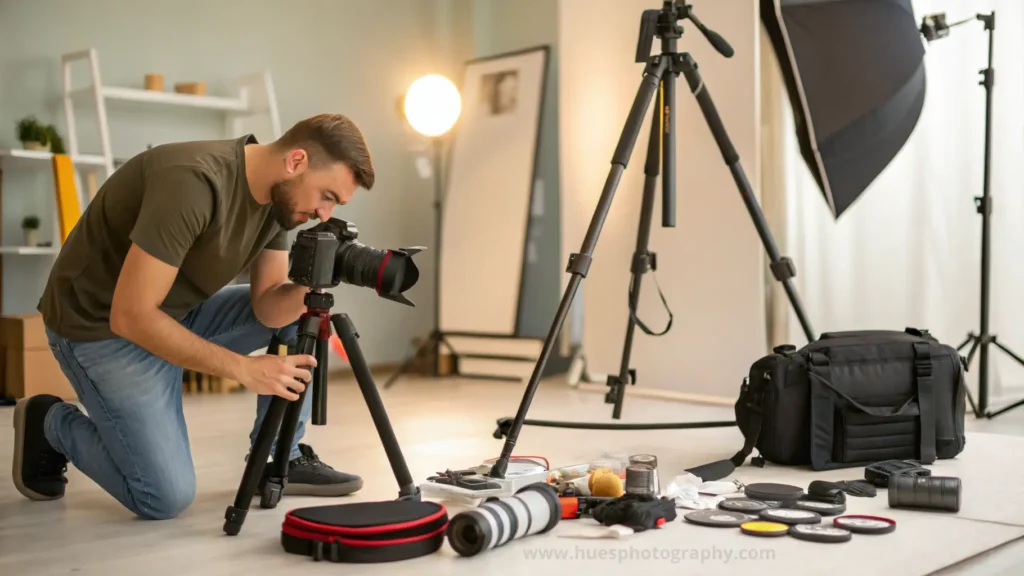Have you ever dreamed of turning your passion for photography into a full-fledged career? Being a professional photographer allows you to capture life’s most memorable moments, whether it’s a breathtaking landscape, a wedding kiss, or the excitement of a sporting event. But turning this dream into a reality requires more than just snapping pictures—it takes dedication, skill development, and a clear strategy. In this guide, we’ll walk you through the steps to becoming a successful professional photographer.
What Does It Mean to Be a Professional Photographer?
The Role of a Professional Photographer
A professional photographer isn’t just someone who takes great photos. It’s about creating images that tell a story, evoke emotion, and meet the needs of clients. Professionals work with various clients—individuals, businesses, and publications—to provide high-quality, tailored photography services. They must also manage their business, market their skills, and constantly refine their techniques.
Different Types of Photography
There are many different fields of photography you can specialize in, including:
- Portrait Photography: Capturing people, often in studio settings or on location.
- Event Photography: Covering weddings, concerts, or corporate events.
- Landscape Photography: Focusing on natural or urban environments.
- Commercial Photography: Working with brands for advertisements, fashion, or product photography.
Why Choose Photography as a Career?
Creative Freedom and Expression
Photography offers a unique opportunity for creative expression. You’re the artist behind the lens, shaping how the world is seen through your images. Every shot is an opportunity to explore new perspectives, experiment with techniques, and tell stories in your style.
Opportunities for Growth and Networking
Photography also opens doors for personal and professional growth. You can collaborate with other creatives, build a solid network of industry contacts, and constantly challenge yourself with new projects.
Essential Skills for Professional Photographers

Understanding Camera Functions
Knowing your camera inside and out is the foundation of great photography. A professional photographer needs to understand different camera modes, and settings like ISO, aperture, and shutter speed, and how to use them to capture the perfect shot in various environments.
Composition and Lighting Mastery
One of the key elements that separates a good photographer from a great one is their understanding of composition and lighting. Learning how to frame shots and manipulate natural and artificial light will make your images stand out.
Post-Processing and Editing Skills
Editing is where the magic happens. Mastering software like Adobe Lightroom and Photoshop allows you to bring out the best in your photos, whether it’s correcting colors, adjusting brightness, or adding creative effects.
Getting the Right Gear
Choosing the Right Camera
You don’t need the most expensive camera, but you do need the right one. DSLR and mirrorless cameras are popular among professionals due to their high-quality image capabilities. Choosing a camera that suits your niche and experience level is crucial.
Lens Options for Different Photography Styles
Different types of photography call for different lenses. A portrait photographer may favor a 50mm prime lens for its bokeh effect, while a landscape photographer might prefer a wide-angle lens. As you progress, building a collection of lenses will expand your creative possibilities.
Other Essential Equipment
Other equipment like tripods, external flashes, and reflectors can significantly improve your photos, especially in challenging lighting conditions. Purchasing high-quality equipment will benefit you in the long term.
Building a Strong Photography Portfolio

Selecting Your Best Work
A photography portfolio is your visual resume. Make sure it showcases your best work, reflects your style, and is tailored to the types of clients you want to attract.
Organizing Your Portfolio for Maximum Impact
Keep your portfolio organized by categories, like portraits, landscapes, or events. This allows potential clients to easily navigate through your work and find what they’re looking for.
Online vs. Physical Portfolios
Having an online portfolio is vital in today’s digital era. Platforms like Squarespace or Adobe Portfolio allow you to showcase your work to a global audience. However, a physical portfolio is still a great tool for in-person meetings.
The Importance of a Niche
Finding Your Photography Niche
Focusing on a specific type of photography allows you to become an expert in that field, making it easier to attract clients. Whether it’s wedding photography, wildlife photography, or food photography, specializing helps you stand out.
Benefits of Specializing
When you specialize, you can command higher prices, gain a reputation in a particular industry, and create work that’s more meaningful to you. Clients also prefer hiring someone who is an expert in the type of photography they need.
Photography Education: Do You Need Formal Training?

Photography Degrees and Certifications
While you don’t necessarily need a degree to become a professional photographer, formal training can provide a solid foundation. Many photographers benefit from attending workshops or earning certifications to boost their credibility.
Self-Taught vs. Formal Education
Many successful photographers are self-taught, learning through practice, online courses, and experimentation. Both paths can lead to success; it’s about choosing what works best for your learning style.
Mastering Photography Techniques
Working with Natural Light
Natural light can add depth and warmth to your photos, but it’s also unpredictable. Learning how to use natural light effectively can help you capture stunning outdoor shots.
Using Artificial Light
Mastering studio lighting and using external flashes allow you to take control of lighting conditions, especially when shooting indoors or in low-light environments.
Understanding Composition and Framing
Proper framing and composition make your photos visually engaging. Using techniques like the rule of thirds or leading lines can turn an ordinary shot into an extraordinary one.
Networking and Marketing Yourself as a Photographer

Building an Online Presence
A strong online presence helps attract clients. Create a website that showcases your portfolio, write a photography blog, and maintain active social media accounts.
Social Media for Photographers
Instagram, Pinterest, and other platforms are great for sharing your work and attracting followers. Posting regularly and engaging with your audience will grow your reputation.
Networking in Photography Communities
Attend photography events, join local photography groups, and collaborate with other professionals. Networking helps you stay informed about industry trends and opens the door to new opportunities.
Setting Up Your Photography Business
Legal Considerations: Licenses and Contracts
Starting a business requires more than taking good photos. You’ll need to register your business, obtain any necessary licenses, and ensure you have contracts for every job to protect yourself legally.
Pricing Your Photography Services
Figuring out how to price your services can be challenging. Research industry standards in your area, factor in your experience, and don’t undervalue your work.
The Power of Practice and Persistence

Learning from Mistakes
Every photographer makes mistakes—it’s part of the process. The important thing is to learn from them and continue improving.
How to Keep Improving Your Skills
Constantly challenge yourself by experimenting with new techniques, attending workshops, and staying curious. Photography is an evolving art form, and there’s always more to learn.
Working with Clients: Tips for Success
Set Clear Expectations from the Start
It’s crucial to communicate all the details of the project with your client upfront. This includes discussing the scope of the work, the number of photos they will receive, the editing process, turnaround times, and any additional costs. Clear expectations help avoid misunderstandings and ensure both you and your client are on the same page.
Develop a Strong Contract
A well-drafted contract protects both you and your client by clearly outlining terms and responsibilities. Include important details like pricing, payment terms, deliverables, cancellation policies, and usage rights. A contract minimizes the risk of disputes and ensures professionalism.
Be a Good Listener
Take the time to understand your client’s vision and goals for the shoot. Ask questions about the style, mood, and specific moments they want to be captured. Listening carefully not only ensures you meet their expectations but also builds trust and rapport.
Offer Creative Input, but Stay Flexible
While it’s important to listen to your client’s ideas, don’t be afraid to offer your professional advice if you think certain approaches could improve the outcome. For example, you might suggest better locations, lighting setups, or poses. However, remain flexible and respectful of their preferences—collaboration is key.
Maintain Professionalism on Set
Professionalism is essential whether you’re shooting in a studio or on location. Arrive early to set up, come prepared with all necessary equipment, and maintain a calm and organized demeanor throughout the shoot. Clients will appreciate your efficiency and reliability.
Staying Up-to-Date with Industry Trends

Follow Influential Photographers and Blogs
One of the easiest ways to stay on top of trends is by following well-known photographers and photography blogs. These influencers often showcase the latest techniques, gear, and editing styles. Platforms like Instagram, YouTube, and photography-specific blogs (e.g., Fstoppers, PetaPixel) are great resources for learning what’s popular and evolving in the industry.
Join Photography Communities and Forums
Joining online photography communities, such as those on Reddit, 500px, or specialized forums, allows you to discuss trends with peers and learn about emerging styles, gear, and techniques. These communities often share up-to-date information on trends, challenges, and solutions faced by photographers globally.
Attend Photography Expos and Workshops
Photography expos, trade shows, and workshops are excellent ways to see the latest gear, software, and trends firsthand. Events like Photokina, WPPI (Wedding & Portrait Photography International), and The Photography Show often introduce new trends in lighting, cameras, lenses, and editing software. Additionally, attending workshops helps you refine your skills and meet other professionals who can share new insights.
Experiment with New Gear and Software
Technology is continually pushing the boundaries of photography. By testing out the latest cameras, lenses, drones, or editing software, you can incorporate new tools into your work. For instance, mirrorless cameras are increasingly popular for their portability and advanced features, while AI-powered editing tools (like Luminar AI) are revolutionizing the way photographers approach post-processing.
Stay Updated on Social Media Trends
Social media trends often influence photography styles and preferences, especially on platforms like Instagram, TikTok, and Pinterest. Pay attention to what types of content go viral or resonate with audiences. For example, lifestyle photography, candid shots, and reels highlighting behind-the-scenes footage are currently popular.
Conclusion
Becoming a professional photographer takes time, patience, and dedication. Whether you’re just starting or looking to refine your skills, this career offers endless opportunities for creativity, growth, and success. With the right strategy, hard work, and passion, you can turn your photography dreams into reality.
FAQs
1. Do I need expensive gear to start as a photographer?
- No, you can start with basic equipment and upgrade as you grow.
2. How long does it take to become a professional photographer?
- It varies, but with consistent effort, it could take a few years to build a successful career.
3. Can I be a part-time professional photographer?
- Absolutely! Many photographers start part-time before transitioning to full-time.
4. What’s the best way to promote my photography business?
- Building a strong online presence and leveraging social media are great ways to promote your business.
5. Is it necessary to specialize in one area of photography?
- Specializing can help you stand out, but many photographers work across multiple genres.
6. Is a degree necessary to become a professional photographer?
- No, a formal degree is not required. Many successful photographers are self-taught or have taken workshops to refine their skills. However, a degree or certification can help build credibility.
7. How can I attract my first clients as a professional photographer?
- Start by offering services to friends and family, or collaborate with local businesses. Sharing your work on social media, building a strong portfolio, and offering discounts for your first few clients can also help you gain traction.
8. What are the most important qualities a professional photographer should have?
- Creativity, attention to detail, patience, and strong communication skills are key. You should also be adaptable, as photography often involves working in different conditions and with diverse clients.
9. How much should I charge as a beginner photographer?
- Research your local market to see what other photographers charge, and base your rates on your experience and the complexity of the project. Start with competitive pricing to attract clients, and adjust your rates as you gain experience.
10. What kind of insurance do professional photographers need?
- Photographers typically need liability insurance to cover potential damages or accidents during a shoot. Equipment insurance is also important to protect your camera and gear from theft or damage.


